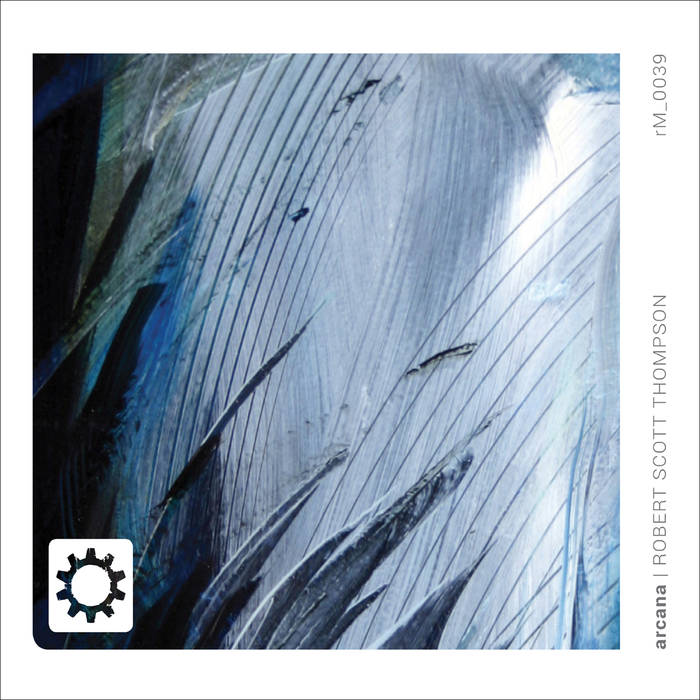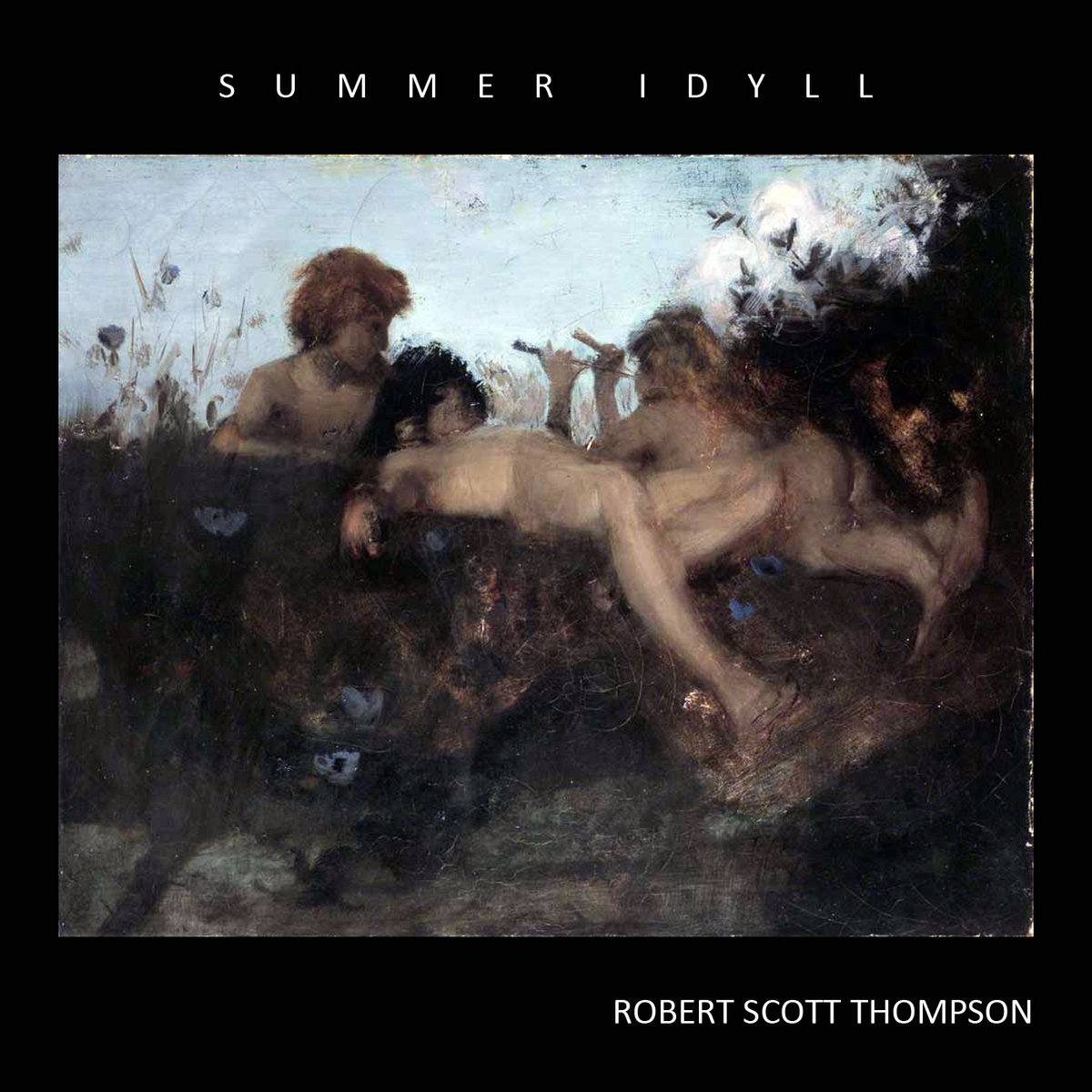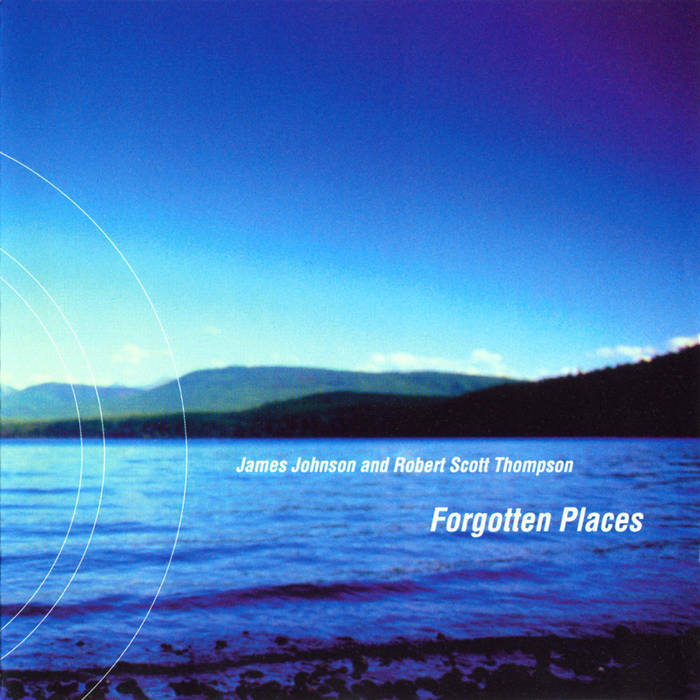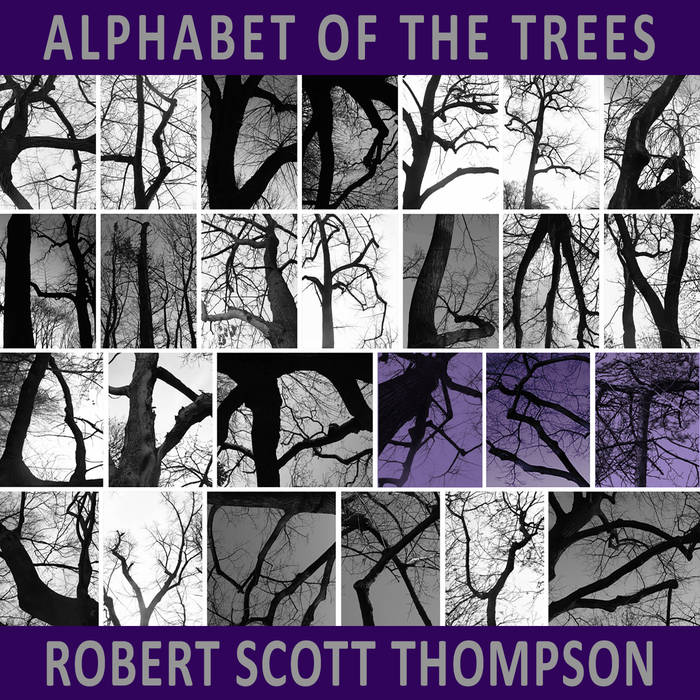Listen to
Pale Blue Dot

Pale Blue Dot (2015) — Robert Scott Thompson — Ambient Music
The choice of “Apogee” as the title for the album’s closing piece clearly wasn’t accidental: its lilting, lullaby-like opening represents some of the loveliest music I’ve heard from the composer and does represent a certifiably high point on Pale Blue Dot.
— Textura
...an absolute gem of an album...
My love of ambient music dates back into to the mists of time mainly from the genius that is Brian Eno and others. Robert Scott Thompson steps lightly on that very same path and turns up an absolute gem of an album in Pale Blue Dot.
The opening track Perigee is very much in the style of Eno, and reminds me greatly of the Ambient 4 series back in 1980. Thompson’s skill here on keyboards is utterly amazing in bringing us a little space filled element, that we can literally imagine floating at the Perigee, (closet point to the Earth from a satellite as in the moon) and from those blissful layered synths, we can just drift on an ambient haze of incredible music.
Trajectory is an altogether a horse of a different colour, the pronounced dramatic tones fill our senses, we can be aware through the music that a feeling of movement is taking place. RST creates a sense of a build-up of power and intensity, as a point of trajectory has been locked onto. The energy in this track is defining and enticing, the bass and sequences manifest an ever growing construction of sheer genius.
It’s sad that at the time of writing this, one of the pioneers of ambient and electronic music in Isao Tomita has just passed away, he would have been incredibly impressed with this album, and the track called Slow Rotation of Stars, this track not only emphasises a sense of movement, but also the very wheels and cogs, wires and buttons, that go into that perception of kinetic energy. The arrangement manifests as a visualization of a satellite changing position in the vast oasis of space.
At the halfway point of the album we come across a really breath-taking composition called Skyway. One really feels from the very opening tones that we are heading right for a stellar nursery, the delicious light passages in this piece are sublime in creating just the right atmosphere, the soft notes and sounds and keyboard give us a true impression of being part of something so vast it is unfathomable.
Now comes the artist’s big moment, as we head right for the title track, Pale Blue Dot. This quite astonishing work of art is not just stunning in its creation; it is a veritable opus of creative talent. The sheer depth of the music is completely immense and awe-inspiring. The creation of a long-form composition can be fraught with the danger of over doing it, but RST takes us, the deep listener, along with him all the way, and like the album as a whole, this track is one that you won’t and can’t press stop to, a quite brilliant arrangement indeed.
From our pale blue dot, we look out at the night sky and wonder at the heavens above, the constellations have always fascinated me, and the latticework of the stars is quite overwhelming at times. RST creates Latticework to describe the amazing network of the starfield and does it with amazing style. The gentle introduction is soon left behind, as we hit into a track that has a sprightly energy about it, the sequences establish with musical ease a visible latticework actually forming within the mind’s eye, ever growing, ever expanding across the amazing space filled galactic vista.
The penultimate piece is called Lunar Idyll; this has to be one of the mos t beautiful tracks off the release and at times reminds me of the Eno album Thursday Afternoon. With this piece, RST has created some of the finest work I have heard from him, this is deeply moving, but almost inter-dimensional in its flow and energy, simply put, stick me on a desert island with this track alone and I would be happy for years, now I wonder if Robert would do us fans a 60 minute version?
Our last point of reference on this sojourn with the artist is called Apogee, this composition has a such a picturesque and exquisite nature about it, this too moved me with its splendour, Robert Scott Thompson’s ability to manifest such a deeply felt track, an arrangement of supreme calmness is quite staggering, this is one track that I think, dear reader and listener, you will want to revisit many times over, the piece seems to have received that little magical touch that only a true master can give it, simply superb, all sixteen minutes of it.
We have now established a safe orbit with our Apogee, so it’s safe for me to reflect on the album as a whole. I do believe this is the finest collection of tracks I have heard so far from Robert Scott Thompson, he has shown me depth, passion, creative genius and artistic manifestation at its best and at times layered a deep level of emotion into the compositions that gives it a really personal feel. There is simply nothing to dislike about this release and as such this is wholeheartedly recommended by me to be part of your ever growing music collection.
— Steve Sheppard – One World Music
...a remarkable level of maturity and refinement.
Robert Scott Thompson’s music has been reviewed in textura’s pages many times over the years, with Pale Blue Dot by my count the eighteenth such recording to have received coverage. Yet without re-acquainting myself with all of those previous releases, I’m willing to wager that this latest one, his debut for Anodize, must be one of the best; at the very least, it shows that the electro-acoustic composer’s music has reached a remarkable level of maturity and refinement. Recorded at the Resonance Observatory in 2015, the seventy-eight-minute collection offers a superb summative portrait that for anyone coming to his music for the first time provides an excellent point of entry. (For the record, it bears worth mentioning that a few pieces earlier surfaced on Thompson’s Aucourant Records set Summer Idyll, a collection of out-takes of material produced for releases on Relaxed Machinery, Dark Winter, and Aucourant as well as Anodize.)
A Professor of Music Composition when not producing electro-acoustic works, Thompson devoted two years to the project’s production and used analog and digital synthesizers, digital signal processing, and software synthesis to bring it to its final form. Exemplifying his maturity as a sequencer of sound, the album’s eight pieces, ranging from six to sixteen minutes, unfold in a way that feels natural and organic; he’s also developed an acute sensitivity to sonic density over the years, and that too is reflected in the album’s arrangements. In some pieces (e.g., “Slow Rotation of Stars”), multiple layers are used to give the music depth and dimensionality; in others, such as “Lunar Idyll,” Thompson strips the material to its essence, confident that only a few elements are needed to serve his compositional needs and achieve the desired effect.
Previous Textura reviews have drawn parallels between him and Eno, and it’s almost impossible not to do so here as well. Like his better-known counterpart, Thompson’s developed the ability to create ambient settings that obviously unfold in time yet still suggest stillness, plus there are moments on Pale Blue Dot where the generative-styled character of the material also invites the comparison. In such cases, the track in question could conceivably continue on for an hour rather than sixteen minutes. The crystalline title track, for instance, unspools at the most leisurely of paces, its meditative, nomadic flow of string plucks, piano chords, and synthetic washes seeming as if it could go on forever.
The release presents different facets of Thompson’s music-making. Cases in point, “Skyway” calls to mind those classic Harold Budd-Eno collaborations in the way minimal piano playing drifts through an ice-covered locale where frozen trees shiver in the breeze. “Latticework,” by comparison, catches one’s ear in featuring a brighter array of sounds than we’re used to hearing from the composer, the piece’s metronomic patterns in this case suggestive of a whirring music box. The choice of “Apogee” as the title for the album’s closing piece clearly wasn’t accidental: its lilting, lullaby-like opening represents some of the loveliest music I’ve heard from the composer and does represent a certifiably high point on Pale Blue Dot.
— Textura
...haunting, beautiful, and meticulously put together...
One of the greatest sources for inspiration among ambient composers is space. The vast, ever-expanding nature of our Universe is a brilliant jumping-off point for countless pieces that explore our own “galaxy” of imagination.
This is evident in Robert Scott Thompson’s record Pale Blue Dot. With each track evoking space travel in name (like “Perigee,” “Apogee,” and the more obvious “Slow Rotation of Stars”) and sound, it is only natural to imagine oneself in orbit while listening.
The music is haunting, beautiful, and meticulously put together in such a way that you feel a complex set of emotions continuously. Some ambient music is meant to lull you into a trance, but Pale Blue Dot is constantly changing the tonal script, never allowing you to put the music into the background.
As a trained music academic and celebrated modern composer of the experimental; this record only further adds to Robert Scott Thompson’s innovative reputation. The self-described “musical alchemist” does not disappoint.
— Mixolydian
...eclectic sonic broadband from Thompson's nomadic muse.
“Pale Blue Dot” is electronic musician Robert Scott Thompson’s esteemed debut for Anodize. Thompson has distinguished himself by refusing pigeonholing despite a fine pedigree within genre, those genres often intersecting between pallid ambient, focused minimalism, cubist space music, electroacoustic hybridization, sparse rhythmic exercises, and all points in between. Throughout a career spanning decades boasting a formidable back catalog to boot, Thompson continues eradicating stylistic boundaries by simply refusing to stay put—experimentalism writ honest and large. Nearly two years in the making, “Pale Blue Dot” reveals yet more eclectic sonic broadband from Thompson’s nomadic muse.
The alchemy master at the very top of his craft...
Prolific US soundsculptor Robert Scott Thompson has landed with his latest album on Darren Bergstein’s Anodize label. Out since the beginning of November 2015 in simple, but elegant 4-panel digipak in limited edition of 50 copies. Unfortunately, as far I know, the album is sold out already at Anodize’s Bandcamp shop.
8 and a half minutes long “Perigee” unfolds the journey with expansive nuances, meandering through enigmatic terrains, reinforced by choir-like drone tides counterpointed with contemplatively mesmerizing chimes, phantasmally high-pitched shimmers and gently dissonant glimpses. Strangely disturbing, yet hauntingly encircling piece. “Trajectory” is slightly shorter than “Perigee”, but it safely remains on the mysterious path with weirdly cascading structure highlighted by intangibly winding clickety-clacks, panoramically reverberating dronescapes and sinuously brooding cello-like patterns. “Slow Rotation Of Stars” dives straightly into more cacophonous, although minimal fields, bridging myriad of swirling crystalline effects with sparse poetic piano, while peculiar clouds are hanging above, then metamorphosing into poignantly introspective slowed down electro-acoustic tempos, sluggishly charged, distinguishly twisted and bizarrely ear-tickling amalgamate precisely exhibiting creatively unique insignias of its protagonist. “Skyway” is announced by translucently glimmering subtleties, which soon coalesce with minimal, yet deeply evocative piano motif, while gently mindscaping blankets are riding atop with occasionally emerging mild fragments. All the exquisite colors of deeply touching minimalism are masterfully revealed in this composition!!! The title track “Pale Blue Dot” clocks over 16 minutes and shifts into more intriguing route, when meticulously blending contemplative layers, quietly cacophonous elements and expansively embracing essences. Another distinctively sculpted and highly refined piece, certainly a truly gorgeous longing horizons await here each attentive ears. Well-done, Robert!!! “Latticework” starts with quite strange intro, but soon converting into lushly colored scenario guided by highly polished tinkling melody persistently painting hypnotic-driven images, while labyrinthine sonic scraps permeate here and there. Another big one and the track title is precisely chosen too!!! Just put your headphones on, it’s a true, 6 and a half minutes long revelation!!! “Lunar Idyll” moves into gracefully immense realms, although some celestial ghosts are hanging above and trying to steal this tranquil oasis, before transmogrifying into relaxed texture merging poetically engulfing piano passages, balsamic laid-back drones and gleaming parade of titillating nuances. Nearly 11 minutes of relatively minimal sound-carving, yet extraordinarily perfumed, strikingly evocative and flawlessly entitled!!! “Apogee” immediately attracts with its utterly lyrical character, where gorgeously undulating heartwarming piano notes masterfully commingle with sweeping cinematic washes, organic traceries and contemplative chinks. And again displaying a thrillingly sinuous soundscape across the full length of 16 minutes. Obviously one of the pinnacles on “Pale Blue Dot” and a grand finale!!!
As usual for Robert Scott Thompson, this highly accomplished sound architect is playing his own league, a first-class of course. Sure, 78-minute “Pale Blue Dot” is not your easy listening ambient session, but with each new dedicated listen you keep on encountering new rewards, new filigrees, new glitters. It’s more and more fascinating!!! A splendidly pan-optic aural adventure with all trademarking earmarks and superb sound quality is delivered here by Robert Scott Thompson’s infinite wizardry. The alchemy master at the very top of his craft, that’s “Pale Blue Dot”!!!
— Richard Gürtler
...another historical ambient masterpiece...
With a quality comparable to many great sonic masters, Robert Scott Thompson has created another historical ambient masterpiece with “Pale Blue Dot”. This is a soundtrack for reflecting on life in both abundance and rarity on a cosmic time-scale.
Opening with “Perigee”, we encounter a lush blue troposphere view of the natural Earth as our orbital spiral descends to ground.
Our “Trajectory” explores the slow natural rhythms of life around us.
Looking upward we observe “The slow rotation of stars” above as we stand on new surreal ground and gaze upon our collective past.
The “Skyway” of ever-changing weather surrounds us, days and nights pass by with grace.
Here on this “Pale blue dot”, the orchestra of life, a deeply personal story that each of us chose to describe in our own way.
A natural anomaly exposes the “Latticework” of interdimensional probabilities in its paradoxical simplicity…
…through which we write our “Lunar idyll” in reflective prose.
Back through “Apogee” our reflection dances across this lone jewel in the vastness of space as we depart for home once again sharing stories of the abundant life we have known through this experience, pondering what other amazing worlds we might discover on our collective journey through space and time.
Thank-you, Robert, for the chance to share your wonderful music on my station.
— Purple Crow
RST's music is well known for its deep impact on the senses of the listener.
Robert Scott Thompson’s ambient music is well known for its deep impact on the senses of the listener. He brings sonic music to a new level in “Perigee” and “Pale Blue Dot”. The synchronization of sounds to create eerie, chilling soundscapes are a hallmark of his music. This music takes the listener to a higher plane of awareness A place where reality and dream merge and become surreal.
— Ricky Kej
...another deep and thoughtful release from this talented composer...
Small, unexpected sounds are the guiding force in composer Robert Scott Thompson’s Pale Blue Dot. Or, rather, they are the texturing force, the element that takes Thompson’s contemporary compositions and nudges them to a place that gives them the power to be more challenging. In this, the listener is put in a spot where the question becomes, are those elements distracting or are they transformative?
Answering that question requires deep listening, an exercise that Pale Blue Dot rewards. Thompson finds balance in adding these elements. The album opens with “Perigee,” where a frenetic tangle of electronic fireflies flit and spin over slow chords and airy vocal pads. It’s an interesting blend where the elements seems to be both fighting for the space and sharing it. Thompson melts that down into a calmer stretch focused on warm chime tones and flotation-device pads. A similar steam of thought emerges on “Skyway”: the piano at the forefront plays within an atmosphere of windy pads, tones that jiggle across the scene, and a nicely subtle almost-static crackle that appears and fades, just there enough to make you notice it. So your focus is constantly being pulled from the piano, but you’re also aware that it’s all one thing that you’re hearing.
The title track is a slow moving, hypnotic churn of sounds that feels like Thompson is standing like a conductor before his array of sources, thoughtfully pointing to each in turn, triggering them to have their say and then moving to the next one but always coming back. A slightly dark, dreamy wash courses behind it. It’s a glacial symphony, beautifully immersive throughout its 16-minute run. “Latticework” is kind of the cool outsider kid of the bunch, a somewhat retro hit of star-bright sequencers. Go deeply into this one to enjoy the rich interplay of Thompson’s lines. There are a few times when the abundance of small touches and the challenge of, for example, jangled versus smooth, can be a little confounding for me.
On a recent listen, as “Slow Rotation of Stars” played in the background, I became convinced that I must have had some other sound source open, and that it was something along with Thompson’s track. Not the case, and perhaps that is part of the composer’s intention. It was when I gave it a more focused listen that I was able to sort out its cluster of sounds. It’s busy, and works it way into a sort of mechanical chugging against high, shining piano notes, and has grown on me with repeat listens.
Pale Blue Dot is another deep and thoughtful release from this talented composer. It makes you think, it makes you listen closely, and it makes you hit “repeat.”
— Hypnagogue
...feels nothing short of infinite...
Named for a famous photo of earth from six billion kilometers away—taken by the Voyager 1 Space Probe in 1990 at the request of popular scientist Carl Sagan—Pale Blue Dot, by Robert Scott Thompson, is a meticulously crafted album by one of electronic music’s most prolific musicians. Across these songs, the Atlanta-based composer does a phenomenal job of translating the weightlessness of zero-gravity into musical form. The meditative rhythms loll slightly, but remain relatively consistent over seemingly endless soundscapes which reveal their depths at their own paces. For a record titled in homage to our humble little corner of the universe, Thompson’s world feels nothing short of infinite.
— Samuel Tornow — Bandcamp Editorial
RELATED RELEASES






Reviews